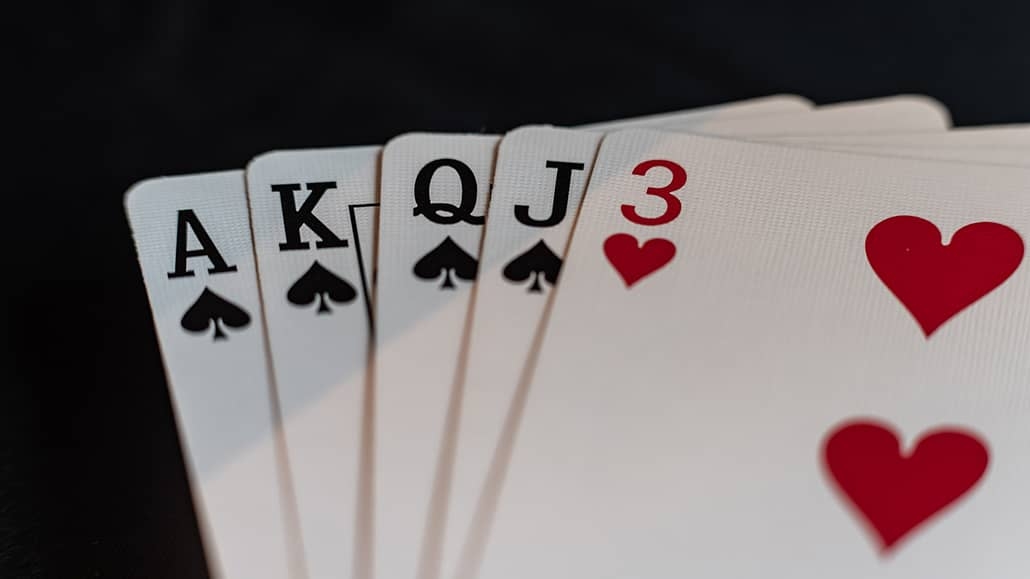5 Card Draw Rules – Learn How To Play The Old Time Greatest

5 Card Draw Rules – Learn How To Play The Old Time Greatest
Images from Pixabay
Back in the day when poker was played in backrooms of smoke-filled bars, 5 Card Draw Poker used to be the most popular choice. Even many of those who now spend their time grinding Hold’em and Omaha have had their first poker experiences by learning how to play 5 Card Draw.
One of the great things about this variation is that it is quite easy to learn, and it doesn’t involve many complicated strategic decisions.
This is also the reason why the game was overshadowed by variations such as 7 Card Stud and, later, Texas Hold’em. While poker rules of these games are also simple, it requires much more strategic thinking, which means that the skill involved is much greater as well.
Sadly, you won’t find many live poker rooms spreading 5 Card Draw poker games these days. An occasional venue here and there might still offer it, but it’s become quite rare.
Online, however, there are plenty of opportunities to play this classic game, and after reading this article, you’ll be pretty much ready to jump straight into the action.
5 Card Draw Rules
As far as 5 Card Draw Rules are concerned, these are pretty easy to learn. The game is played with the standard deck of 52 cards, and it is a high poker variant. This means that poker hand rankings are exactly the same as those in games like Hold’em. A royal flush beats everything, and the weakest hand you can have is a high card.

The round of 5 Card Draw begins with all players getting dealt five cards, face down. The dealer will start from the first player to their left and deal one card to each player in the clockwise direction.
Once all players are dealt five cards, the first round of betting will ensue. After that, the play will move on to the draw phase.
During the draw phase, all players who are still actively involved in the hand will have a chance to exchange as many cards as they like from their hand (from one to five).
They’ll choose which cards to discard, and the dealer will give them new cards from the deck. Of course, the player can also opt not to change any cards, in which case they “stand pat.”
After the draw, another round of betting follows. Once all the betting is done, all players still involved in the pot will table their hands to determine the winner.
The player with the best hand wins the pot. If two or more players have the same hand, they’ll split the pot equally. Suits are irrelevant in Five Card Draw poker, and it is never used to determine the winner. However, if players have the same hand, such as two pair or one pair, the player with the highest side card (kicker) will win.
Betting in Five Card Draw
Unlike some other variants that are only played following a particular betting structure, you’ll find that Five Card Draw is played in all three formats, i.e., fixed limit, pot limit, and no limit.
- In the fixed limit, bets are fixed, and there is no room for maneuvering
- Pot limit allows you to size your bets any way you like, but they can never exceed the size of the pot
- In no limit, you can bet anything between a single-blind and your entire stack at any point it’s your turn to act
The setup of the five-card draw is the same as in Hold’em, i.e., there is a small blind and the big blind.
The first round of betting begins with the UTG player once all cards are dealt, and then the action follows based on standard poker positions.

Once the first round of betting is completed, players have a chance to change up to five cards from their hand, as described earlier. After this, the second round of betting begins, starting with the small blind or the first still-active player to the left of the small blind.
When all bets are settled, if there are still players in the pot, the showdown will ensue. All players will table their hands, and the pot is awarded to the player showing the highest-ranked combination.
Basic Five Card Draw Strategy
If you want to know how to play 5 Card Draw well, you’ll need to understand some basic strategic principles of this game as well. It is true that this variation isn’t as complex or as demanding as community card games, but there are still some things you need to know before you start playing for real money.
This article won’t go too deep into the 5-Card Draw strategy, especially because right plays in certain spots can differ quite significantly depending on whether the game is played as no/pot limit or fixed limit. Some basic principles will hold true regardless of the betting structure, though.
Choosing Your Starting Hands in Five Card Draw
In pretty much every poker variation, the way you select your starting hands plays a huge role in your overall success. Knowing what hands to get involved with and what hands are best sent to the muck will make your life much easier.
Since 5 Card Draw is a game with blinds, your position at the table is quite significant as well. You’ll be able to play more hands as you get closer to the button as you’ll have the benefit of acting last and will be able to make much better-informed decisions.
Here are a few quick 5 Card Draw poker tips to help you pick your starting hands:
- You should play hands that are two pair or better from any position at the table
- Get involved with big pocket pairs such as Aces or Kings from all positions
- Start including strong pocket pairs such as Queens, Jacks, 10s, and 9s as you get closer to the BTN
- Don’t go crazy with straight and flush draws
For new and inexperienced players, the last of these 5 Card Draw tips is very important. Hands such as four-to-a-straight or four-to-a-flush generally look much better than they really are. Since you’re only getting one new card on the draw, you’ll be about a 4 to 1 underdog to actually make your hand, so quite often, you just won’t have the pot odds to get involved.
Sticking to strong holdings during the learning process is probably the best way to go about mastering 5 Card Draw poker game.
As you gather more experience and get a better feel for the game, you’ll be able to start including more hands and will know how to recognize and avoid many tricky spots.
The Draw Round: What Cards to Change?
Hold’em and PLO poker games have a flop, turn, and river – this is five cards you can use to try and improve your starting hand. In Five Card Draw, you only get one chance to discard some cards and get the new ones. So, how do you go about figuring out what cards to actually let go of?

There are a few typical situations that will come up repeatedly in this game where you’re likely to be uncertain as to what’s the best thing to do. Follow these simple 5-Card Draw tips, and you’ll be fine for the most part:
- If you have just one pair, discard all three remaining cards
- With two pair, discard just the unpaired card
- When you have trips, discard both of the remaining cards
- With four-card draws, exchange the card that’s not the part of the draw
- Do not draw when you have three cards to a flush or a straight since that should go into the muck
Even though you might be tempted to sometimes leave an extra card with your three of a kind or a pair, you’re actually reducing your chances of improving by doing so.
These decisions have been trialed and tested, and they are mathematically your best options in given situations.
Bluffing in 5 Card Draw: How Effective Is It?
If there is one thing that most players recognize 5 Card Draw for, it’s bluffing. There are countless movies showing scenes where players are playing the game, and one of them goes on to pull a huge, stone-cold bluff to win a massive pot.
In reality, though, things aren’t nearly as exciting.
Bluffing does play an important role in Five Card Draw, but it’s not what this game is about.
An experienced player will quickly pick up on your tendency to bluff too much and will start to look you up based on the strength of their hand.
The amount of information you have on your opponent’s holdings in this game is quite limited. There are no shared cards, and you don’t get to see any of their down-cards. The only small piece of information you do have is the number of cards they choose to discard.
For example, if someone is only exchanging one card, they’re likely to have a strong hand such as two pair or a four-card straight or flush draw. If you’re planning to pull a bluff, you can use this to your advantage and sometimes only take one or two cards, although you should be taking two or three.

While you’re reducing your chances of improving, you’re also sending a message that you already have a hand that’s stronger than your actual holdings. Your opponents will notice this, and if you follow up on it by firing a big bet yourself or raising their bet, they might be more inclined to believe you.
On the other hand, your bluff won’t look too credible if you discarded four cards, and now you’re barreling all of a sudden.
It’s simply less likely that you have a big hand when you start from such a weak position.
You shouldn’t be relying on bluffs too much in 5 Card Draw unless you have a specific player at your table that you want to target.
If you know someone is prone to folding under pressure, you can adjust your strategy to include more bluffs against that particular opponent.
Otherwise, stick to playing a solid game and use your bluff sparingly, which will make them look much more credible when you do decide to go for it.
How Important Is Skill in Five Card Draw?
There is a skill element to every poker variation out there, well maybe except Ultimate Texas Holdem or other casino games like 3 Card Poker. However, it’s fair to say that 5 Card Draw is one of the less-demanding games in this sense. Once you’ve learned the fundamental 5 Card Draw strategy, which isn’t too comprehensive, your opponents will struggle to find a solid edge against you.
At the same time, the experience is really important in this game. A good player will quickly get a feel for the table and will be able to pick up on who’s doing what.
If you can identify players who’re bluffing too much, for example, you can look to get involved in more pots with them and let them transfer some cash from their stack to yours whenever you have a big hand.
The mental aspect of the meta-game is thus very important in 5 Card Draw.
While the game isn’t too complex in terms of math, it is one of those variations where you’ll truly need to play the player.
With not much clear information available to you, you’ll have to rely a lot on your experience and your instinct.
Getting Paid
One of the biggest skills you can have in Five Card Draw is the skill to get paid when you make big hands. Just like in any other form of poker, you’ll get dealt a fair share of good holdings, but it’s what you do with those hands that really counts.
Experienced players won’t be paying you off with subpar hands in hopes of catching a rare bluff. However, there are always those who just can’t help themselves.
This is especially pronounced in 5 Card Draw because the rest of the table has very little information about your hand. So, those “curious minds” will keep paying you off to “keep you honest.”
So, when you do start with a big hand, you should tailor your strategy so that you keep these types of players involved in a pot. If you’re likely to end up with a winner, you also want to have someone willing to put money into the pot. Full houses may look nice, but they’re only worth as much as you can charge others to see them.
Quick Tips to Live By for 5 Card Draw poker
While you might get the urge to get fancy while playing Five Card Draw, you’ll usually achieve the best results by playing a solid and sensible game. Getting too much out of line is often the path that will see your stack evaporate and your poker bankroll dive.
If you’re just starting and have read this article to figure out how to play 5 Card Draw, you should have a pretty good idea of what you need to do to play this solid and reasonable style. To wrap things up, here are a few quick tips that sum it all up.
- Be careful about your starting hand selection and don’t get involved with weak hands
- Try to play more speculative hands when you’re in the position
- Pay attention to what your opponents are doing and how many cards they discard during the draw round
- Keep in mind that your odds of making a straight or a flush with one card to come are about 4 to 1
- Try to figure out your opponents’ playing styles and tendencies as quickly as you can as this is the only solid information you’ll get playing 5 Card Draw
- Stay away from fancy bluffs unless you have a very good reason for them (a player who’s folding way too much to aggression, for example).
As long as you stick to these 5 Card Draw tips and follow other strategy advice from this article, you should do just fine in most games. Your opponents will struggle to exploit you even if they have much more experience playing the game.

Conclusion: Learn How To Play Five Card Draw
Five Card Draw may be an old game that’s no longer as popular in mainstream poker circles, but that doesn’t make it any less fun to play. Learning how to play 5 Card Draw can be quite beneficial even if you’re just looking for a way to add some flavor to your home games.
After all, everyone needs a break from Texas Hold’em every now and again.
If your primary poker goals are more of financial nature, learning this variant is still a good idea. There are still some juicy 5 Card Draw online poker games, even on some smaller and lesser-known sites.
Many of those who sit down to play are there just to have a punt, and having solid strategic fundamentals will give you a considerable edge.
Either way, learning new poker variations is always fun, so you can join one of the poker training sites to learn more. It helps to expand your perspective of poker in general and provides you with new ways to look at things. And, even if you don’t see the use of learning 5 Card Draw rules right now, you never know when a juicy game might pop up out of nowhere, and then you’ll be happy you took a bit of time to do it.










